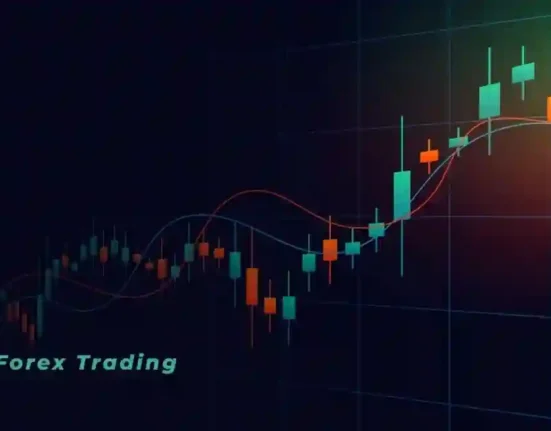In the high-stakes world of forex trading, emotions play a significant role in shaping decision-making and trading outcomes. Fear, in particular, can exert a powerful influence on traders, leading to irrational behavior, impulsive decisions, and costly mistakes. While human traders may struggle to overcome emotional biases, forex robots offer a unique advantage by executing trades based on predefined rules and algorithms, free from emotional interference. However, even forex robots are not immune to the psychological pitfalls of fear. In this article, we explore the psychology of fear in forex trading, the impact of emotional bias on robot trading strategies, and strategies to mitigate fear-induced decision-making for more effective and disciplined trading.
Understanding the Psychology of Fear:
Fear is a primal emotion that triggers the body’s fight-or-flight response, preparing individuals to either confront or avoid perceived threats or dangers. In the context of forex trading, fear can manifest in various ways:
- Fear of Loss: Traders may experience fear of loss when facing potential losses or adverse market movements, leading to hesitation, indecision, or reluctance to take necessary risks.
- Fear of Missing Out (FOMO): Traders may experience fear of missing out when witnessing lucrative trading opportunities or market trends, leading to impulsive decisions, chasing trades, or entering positions without proper analysis or risk management.
- Fear of Uncertainty: Traders may experience fear of uncertainty when facing unknown or unpredictable market conditions, leading to anxiety, doubt, or second-guessing of trading decisions.
- Fear of Failure: Traders may experience fear of failure when confronting past trading mistakes, losses, or setbacks, leading to self-doubt, low confidence, or avoidance of risk-taking opportunities.
Impact of Emotional Bias on Forex Robot Trading:
While forex robots are designed to execute trades based on predefined rules and algorithms, they are not immune to the psychological effects of fear. Emotional bias can influence robot trading strategies in several ways:
- Overcautious Trading: Fear-induced emotional bias may cause forex robots to adopt overly cautious trading strategies, leading to missed opportunities, reduced profitability, or underperformance compared to more aggressive or opportunistic approaches.
- Hesitation and Delay: Fear-induced emotional bias may cause forex robots to hesitate or delay trade execution in response to perceived risks or uncertainties, resulting in suboptimal entry or exit points and missed trading opportunities.
- Impulsive Decision-Making: Fear-induced emotional bias may cause forex robots to engage in impulsive decision-making, such as entering or exiting trades prematurely, chasing market trends, or deviating from predefined trading rules and risk management parameters.
- Loss Aversion: Fear-induced emotional bias may cause forex robots to exhibit loss aversion behavior, prioritizing the avoidance of losses over the pursuit of gains, leading to conservative trading strategies, missed profit opportunities, or suboptimal risk-reward ratios.
Strategies to Mitigate Fear-Induced Decision-Making:
To mitigate fear-induced decision-making and emotional bias in forex robot trading, traders and developers can implement the following strategies:
- Rule-Based Trading: Implementing rule-based trading strategies that define clear, objective, and predefined rules for trade entry, exit, and risk management. Rule-based trading reduces the influence of emotional bias by relying on systematic, algorithmic decision-making rather than subjective judgment or intuition.
- Risk Management Controls: Incorporating robust risk management controls into forex robot strategies, such as stop-loss orders, position sizing rules, or maximum drawdown limits. Risk management controls help mitigate the impact of fear-induced decision-making by limiting potential losses, preserving trading capital, and enforcing discipline in trade execution.
- Backtesting and Optimization: Conducting thorough backtesting and optimization of forex robot strategies using historical data to assess performance, validate assumptions, and identify potential weaknesses or vulnerabilities. Backtesting enables traders to evaluate the effectiveness of robot strategies under various market conditions and scenarios, building confidence and reducing the influence of fear-induced decision-making.
- Realistic Expectations: Setting realistic expectations for forex robot performance, profitability, and drawdowns based on historical data, statistical analysis, and risk assessment. Realistic expectations help manage fear-induced emotional bias by reducing the pressure to achieve unrealistic goals or targets, fostering patience, discipline, and resilience in forex trading.
- Continuous Monitoring and Evaluation: Monitoring and evaluating forex robot performance on an ongoing basis, identifying deviations from predefined rules or expectations, and making necessary adjustments or refinements to trading strategies. Continuous monitoring helps detect and mitigate the impact of fear-induced decision-making by maintaining accountability, transparency, and adaptability in robot trading.
Case Studies and Real-World Examples:
Several case studies and real-world examples illustrate the impact of fear-induced decision-making on forex robot trading:
- Overcautious Trading: Researchers have observed instances of overcautious trading behavior in forex robots, where fear-induced emotional bias leads to conservative trading strategies, missed opportunities, and reduced profitability compared to more aggressive or opportunistic approaches.
- Hesitation and Delay: Traders have reported instances of hesitation and delay in forex robot trade execution, where fear-induced emotional bias causes robots to wait for additional confirmation or reassurance before entering or exiting trades, resulting in suboptimal entry or exit points and missed trading opportunities.
- Impulsive Decision-Making: Developers have documented cases of impulsive decision-making in forex robot trading, where fear-induced emotional bias leads to sudden or erratic changes in trading behavior, such as entering or exiting trades prematurely, chasing market trends, or deviating from predefined rules and risk management parameters.
- Loss Aversion: Traders have experienced instances of loss aversion behavior in forex robot trading, where fear-induced emotional bias causes robots to prioritize the avoidance of losses over the pursuit of gains, leading to conservative trading strategies, missed profit opportunities, or suboptimal risk-reward ratios.
Conclusion:
Fear-induced emotional bias poses a significant challenge in forex trading, influencing decision-making and trading outcomes for both human traders and forex robots. While forex robots offer advantages in executing trades based on predefined rules and algorithms, they are not immune to the psychological effects of fear. To overcome fear-induced decision-making and emotional bias in forex robot trading, traders and developers must implement strategies such as rule-based trading, risk management controls, backtesting and optimization, realistic expectations, and continuous monitoring and evaluation. By mitigating the impact of fear-induced emotional bias, forex robots can execute trades with discipline, confidence, and consistency, achieving optimal performance and profitability in the dynamic and unpredictable forex market.





